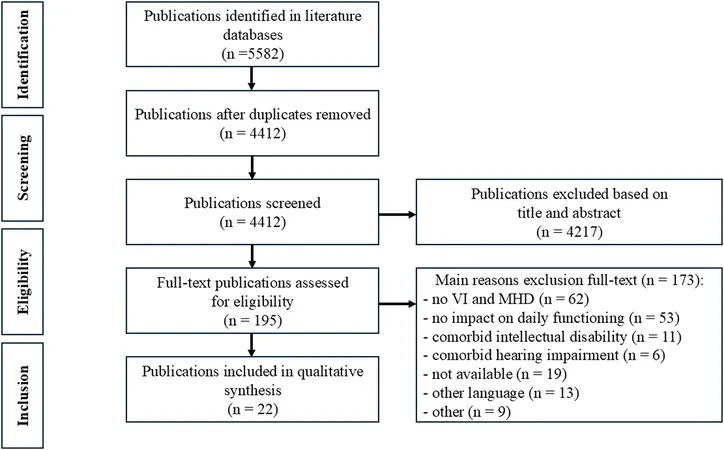
The Overlooked Struggles of the Visually Impaired: How Mental Health Disorders Compound Daily Challenges
2025-07-23
Author: Emma
Visual impairments (VIs) and mental health disorders (MHDs) often intersect, creating a complex web of challenges for those affected. Defined by the World Health Organization, VI impacts a person's ability to see and can range from mild issues to profound blindness. As this article dives deep, it uncovers how this vision loss drastically alters one’s capacity for everyday tasks, communication, and social interactions. The combination of VI and MHDs compounds these difficulties, often leading to feelings of isolation and emotional distress.
The Burden of Dual Challenges
Individuals grappling with both VI and MHDs encounter unique hurdles. The navigation of daily life becomes fraught with obstacles that can lead to dependency on others, emotional turbulence, and frustration. Research indicates that these overlapping challenges can overwhelm a person's resilience.
Deepening Isolation and Dependency
When facing both visual and mental health hurdles, individuals often struggle with self-care, maintaining employment, and fostering social relationships. The blend of practical hardships and emotional barriers heightens the risk of social withdrawal, leaving individuals feeling trapped in their circumstances.
The Need for Specialized Care
In severe cases, individuals may require specialized, long-term care at facilities dedicated to low vision and mental health services. These resources might offer rehabilitation, adaptive technique training, and counseling tailored specifically for those facing this double challenge.
A Call for More Research
Despite the magnitude of these combined impacts, there's a surprising shortage of research exploring tailored interventions for individuals with both VI and MHDs. As existing literature often focuses on specific mental health issues like depression and anxiety in conjunction with VI, this review draws attention to a broader range of MHDs that may also significantly affect daily life.
Current Investigative Efforts
To bridge this knowledge gap, two significant studies are underway. The first is a Delphi study that collaborates with experts in the field, including those working directly with the visually impaired and MHDs. The second is a literature review focusing on disorders like antisocial personality disorder, autism spectrum disorder, obsessive-compulsive disorder, and psychosis to understand their interplay with visual impairment.
Understanding the Impact
Preliminary findings reveal that individuals with VI and mental health conditions face compounded challenges, from mobility issues to social engagement difficulties. The psychological burden is aggravated by anxiety about social interactions and a heightened sense of isolation, particularly in public settings. This alerts us that the road to recovery must address the dual impact of these conditions comprehensively.
A Growing Need Amid Changing Demographics
As the population ages and the prevalence of visual impairments increases, the necessity for targeted research becomes ever more pressing. We urgently need to understand how these conditions interact and develop appropriate supportive care strategies.
Future Directions for Healthcare Providers
Healthcare professionals working with this demographic are encouraged to collaborate on research and exchange insights about overcoming the complexities posed by MHDs in patients with VI. Initiatives like PsyCoVIA are guiding professionals to share best practices and deepen their understanding of this critical intersection of health issues.
In conclusion, while the current research landscape reveals significant gaps, it also highlights the urgent need for more comprehensive studies. Increasing awareness of these intertwined challenges will foster innovations in support and treatment strategies that improve the quality of life for those navigating the difficulties of visual impairment and mental health disorders.









 Brasil (PT)
Brasil (PT)
 Canada (EN)
Canada (EN)
 Chile (ES)
Chile (ES)
 Česko (CS)
Česko (CS)
 대한민국 (KO)
대한민국 (KO)
 España (ES)
España (ES)
 France (FR)
France (FR)
 Hong Kong (EN)
Hong Kong (EN)
 Italia (IT)
Italia (IT)
 日本 (JA)
日本 (JA)
 Magyarország (HU)
Magyarország (HU)
 Norge (NO)
Norge (NO)
 Polska (PL)
Polska (PL)
 Schweiz (DE)
Schweiz (DE)
 Singapore (EN)
Singapore (EN)
 Sverige (SV)
Sverige (SV)
 Suomi (FI)
Suomi (FI)
 Türkiye (TR)
Türkiye (TR)
 الإمارات العربية المتحدة (AR)
الإمارات العربية المتحدة (AR)